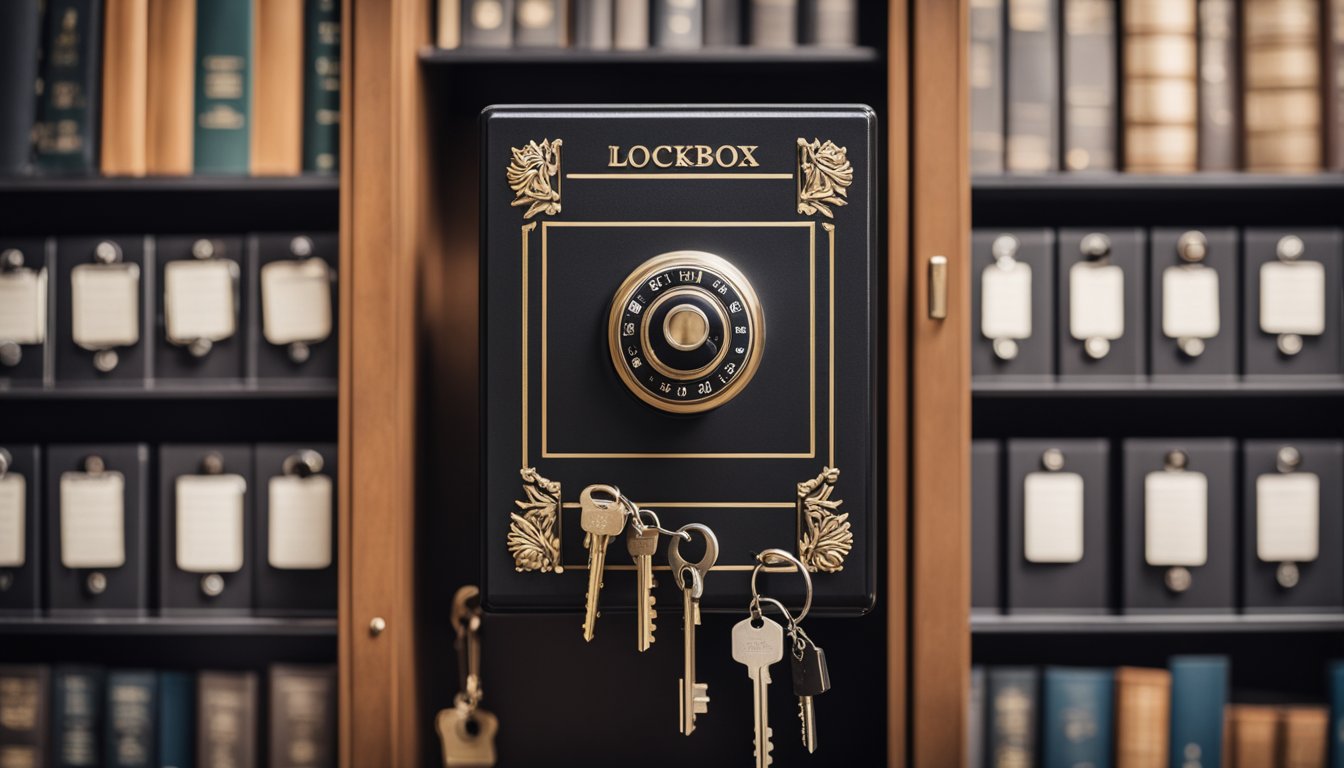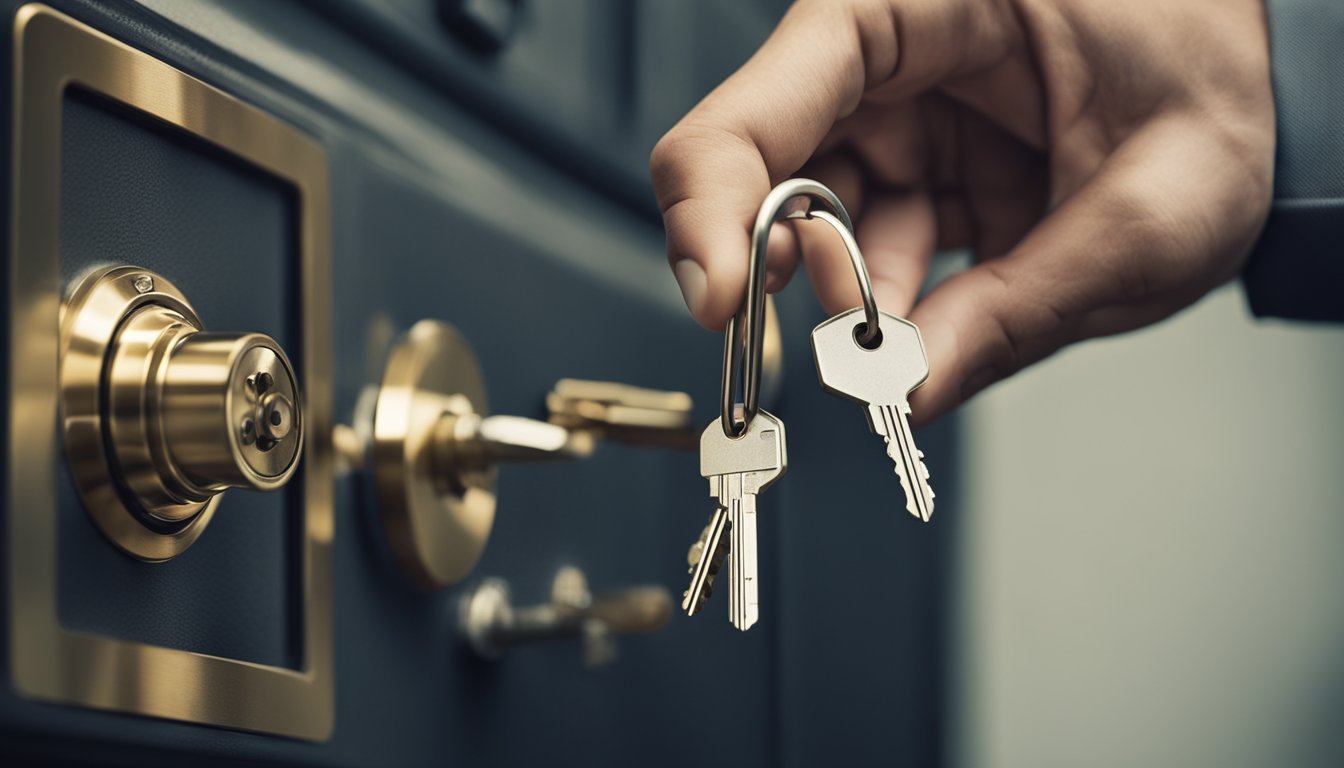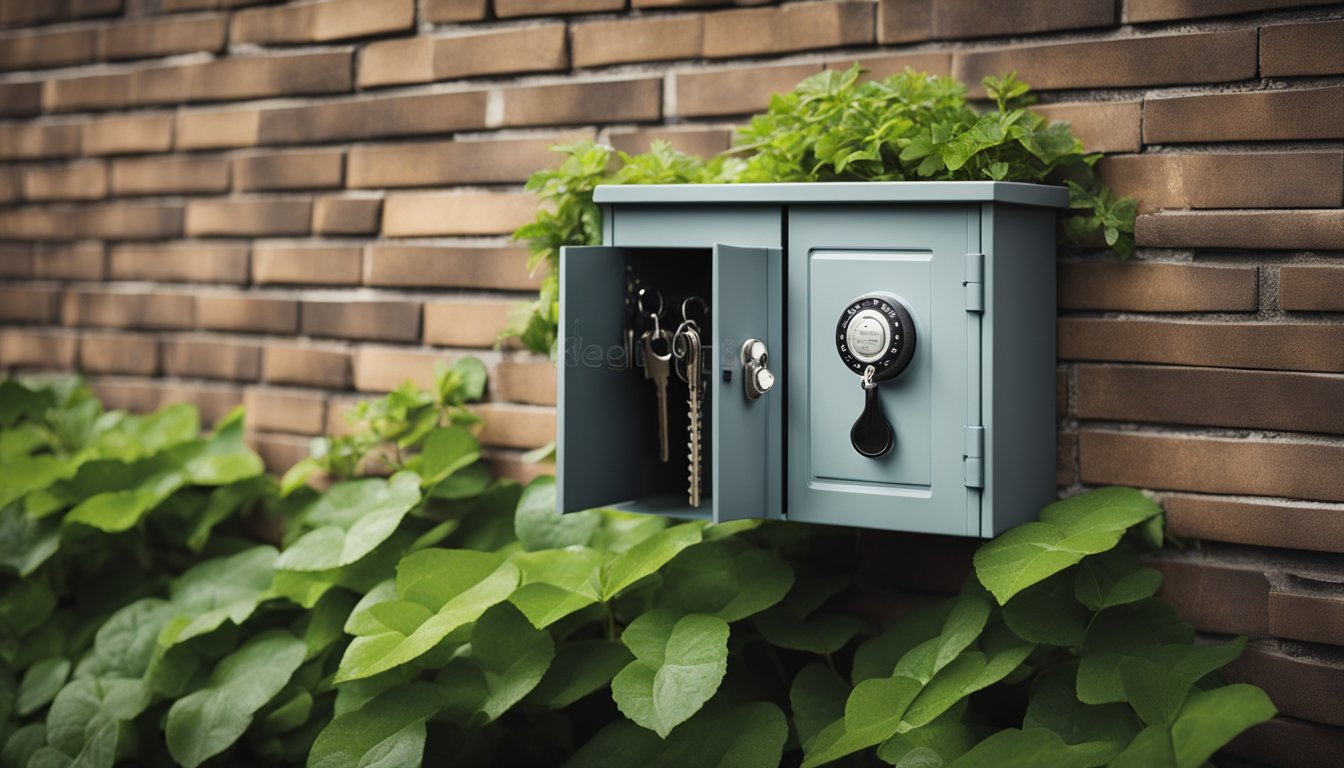Late updated: 05 Aug 2024 10:08
Written by: Elena Prescott
Safe Key Storage Tips For Homeowners: Essential Advice for Security
Keeping your home secure involves more than just locking the doors and windows. As homeowners, we often face the dilemma of where to store spare keys safely. One of the most effective solutions is to use a durable key lock box, which keeps your keys accessible only to those you trust. In this article, we'll explore various tips and best practices to ensure your extra keys are secure and your home remains safe.

Key storage might seem trivial, but it plays a crucial role in your home's overall security. With numerous options available, from traditional hidden spots to advanced key lock boxes, it's essential to choose a method that balances convenience with security. Choosing the right place and device to store your spare keys can prevent break-ins and provide peace of mind.
We’ll guide you through the types of key lock boxes, their installation, and best practices for their use. Selecting the correct key storage solution can make a significant difference in your home security strategy. Ready to secure your keys and your home? Let's dive into the best key storage tips for homeowners.
Key Takeaways
- Secure spare keys using a durable key lock box.
- Choose a key storage method that balances convenience and security.
- Install key lock boxes in discreet yet accessible locations.
Understanding Key Safes and Their Importance
Key safes provide secure storage for keys, offering peace of mind and enhancing home security. We will explore what key safes are, their security benefits, and the different types available.
What Is a Key Safe and Its Basic Uses
A key safe, also known as a lock box, is a secure storage device designed to hold keys. Typically installed outdoors, it allows homeowners to securely store spare keys.
Offering convenience, key safes help avoid the common pitfalls of hiding keys under doormats or flower pots. They enable homeowners, family members, or trusted individuals like carers to access the home in case of emergency.
Modern key safes are designed with various security features to prevent unauthorised access, ensuring the stored keys remain safe.
The Security Benefits of Using a Key Safe
Key safes significantly enhance home security by eliminating vulnerable hiding spots for spare keys. For example, the Supra C500 Pro key safe meets police preferred specifications, known for being tamper-proof and secure.
The convenience of a key safe is unmatched, especially for families with multiple members or carers who need access while ensuring that unauthorised individuals cannot easily access the home.
When choosing a key safe, ensuring it's made from durable materials and has passed stringent security tests is vital for maximum protection.
Assessing the Different Types of Key Safes
Key safes come in various types and designs to suit different needs. Some key safes are police-approved, like the Supra C500 Pro, known for its robust security features.
For those needing high security, it's essential to select models that have been rigorously tested. There are mechanical combination locks, electronic key safes, and even smart key safes that can be controlled via mobile apps.
Choosing the right type involves considering the level of security required, ease of use, and specific needs such as granting access to carers or emergency responders. Knowing each type's benefits and limitations will guide homeowners to make an informed decision.
Selecting and Installing the Correct Key Safe

Choosing the right key safe and installing it correctly is essential to protect your home's access points and ensure security compliance. Let's explore the main considerations homeowners should keep in mind.
Factors to Consider When Choosing a Key Safe
When selecting a key safe, it's crucial to evaluate the security level.
Police Preferred Status: Opt for a key safe that has achieved the Secured by Design accreditation, indicating trust and reliability.
Material and Construction: High-quality steel enhances durability and resistance to tampering.
Lock Mechanism: Choose a key safe with robust locks, such as combination dials or digital keypads, which offer better security compared to simple mechanical locks.
ISO Accreditation: Ensure the key safe meets ISO-accredited standards for quality and security.
Capacity and Size: Depending on your needs, select a safe that can store multiple keys or cards.
Weather Resistance: If installing outside, the key safe should be weatherproof to prevent rust and damage.
Installation Best Practices for Homeowners
Properly installing your key safe is as important as choosing the right one.
Choosing the Location: Install the key safe at a discreet, out-of-sight spot to reduce tampering risks. Consider wall-mounted options for added strength and convenience.
Anchoring: Use heavy-duty screws and ensure the key safe is anchored to a solid structure, such as a wall or concrete surface. This prevents easy removal by force.
Drilling and Securing: Ensure accurate drilling and securing when mounting the safe to avoid weakening the installation. Always adhere to the manufacturer's installation guidelines.
Professional Assistance: If unsure, consider hiring a professional to ensure the safe is installed correctly and securely.
Maintaining Key Safe Security
Regular maintenance is key to retaining the secure integrity of your key safe.
Routine Checks: Periodically inspect the lock mechanism for signs of wear or tampering. Address any issues promptly.
Clean the Safe: Keep the key safe clean, especially if it's wall-mounted outside. Dirt and moisture can impact lock functionality.
Change Access Codes: Regularly update the access codes to enhance security. Ensure codes are kept confidential and not shared unnecessarily.
Home Insurance Clause: Check your home insurance policy as installing a high-standard key safe may qualify you for discounts.
Security Enhancements: Implement additional security measures such as CCTV monitoring to deter unauthorised access.
Following these steps will ensure your key safe remains a reliable and secure solution for storing your keys.
Frequently Asked Questions

When it comes to storing keys securely, homeowners need reliable methods that guarantee accessibility while preventing unauthorised access. We provide clear guidance on various effective solutions.
What are the most secure methods for storing keys during the winter months?
Cold and wet conditions can impact the integrity of keys and locks. Storing keys in weatherproof lock boxes is essential. Products like the Igloohome Smart Key Box 3 are ideal as they offer protection against harsh weather while ensuring security.
How can one create a DIY solution for key storage at home?
Creating a DIY key storage solution can be simple and cost-effective. Utilising everyday items such as an old, unused outlet cover can cleverly disguise a key holder. Always ensure that DIY solutions blend seamlessly with their surroundings.
What are some effective yet inconspicuous ways to hide keys around the property?
Hiding keys in plain sight can be effective if done discreetly. Options include hiding keys inside fake rocks or placing them inside secure garden ornaments. Avoid predictable locations like under the door mat or above the door frame.
How should keys be stored indoors to maintain both accessibility and safety?
Indoors, it’s best to use a dedicated key hook near the entryway but out of direct view from windows. For added security, a small wall-mounted lock box can keep keys secure yet accessible to household members.
Can you recommend any secure outdoor key hiding places with a combination lock?
Secure outdoor key hiding places are ideal for those who need frequent access. The Master Lock 5400D and the Kidde Keysafe Permanent 5-Key are highly recommended. These boxes are secure, durable, and can be affixed to solid surfaces.
What strategies are recommended for keeping both keys and wallets safe within the home?
In-home security for keys and wallets can be enhanced by using a small safe. Placing this safe in a discreet location, such as inside a wardrobe or under a bed, can keep valuables out of sight and reach. Leather organisers with lockable sections also add an extra layer of security.
